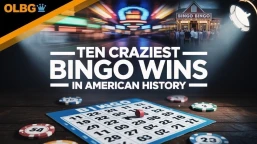
With 30+ years in racing and betting, Darren helps punters develop their skills. As OLBG’s Tipster boss and expert guide, he turns insight into winning strategy.
|
Much attention is paid on this site to doing the opposite of the above, or at least turning small amounts of money into a lot more money. That is really the essence of betting; after all nobody takes a bet that won't increase the amount of money they have, at least if they win. What all bets have in common is what happens if the bettor loses; in this case, our stake is gone.
The backbone of any sensible betting strategy is to pick bets that we think will win. The OLBG betting school has a brilliant article titled: how to find winners -101 tips to choose a winning horse racing bet But we need to recognise that we might lose some bets! But hopefully, we calculate that the winners will pay enough to cover the ones that lose and then more. This is what value betting is, and I believe that it is one of the two most important things in betting as a whole, it is certainly the one about which I write most on this blog. |
|
But this series of blogs is about another very important aspect of betting and that is staking.
This blog is the follow-up to “Do You Lose Too Often?” a blog I wrote in August where I discussed the question of how often is too often to lose, I would suggest anyone who hasn't read this does so.
The conclusion I came to is that this depends entirely on the odds taken.

A punter could win 10%, 50% or 90% of the time, but we can't know whether this is often enough without knowing what odds are available.
If the average odds of the winning bets are enough, then even the punter that only wins 10% of the time could still make money.
For example, if he strikes ten bets for level stakes at 10/1, and wins the last one of them, he will be in profit by one unit at the end.
But in this scenario, had the bettor run out of money after the ninth bet, then he wouldn't have made money, even though his bets were the same.
Of course, value is important, but perhaps the stake is more important. If he gets this wrong then his value bets may still not make him money.
The aim of this series of blogs are to discuss what is the right amount to stake on a bet so that this doesn't happen.
But before I say what I believe sensible bettors should do, I am going to write a cautionary tale about what I am certain they should not do.
This approach is one I have heard numerous people at numerous times, and one which goes back at least to 18th century France. It can be summed up as follows:
“I know I will lose sometimes, so when I do I'll just increase my stake the next time so that I will win back what I have lost.”
At first glance this sounds sensible, the Martingale strategy and similar systems are based on the idea that if a bettor loses they can just increase their stake until they win back their losses.
This strategy assumes two things that are not true, that bettors have an infinite amount of money and that they can always get a bet on at any stake.
Because these two things aren't true, this means a person following this strategy ends up losing all of their betting bank sometimes surprisingly quickly.
Example - Martingale Strategy
Imagine a bettor with a bank of £100 who starts out betting £5 on bets that return even money and win 55% of the time.
If he doubles his stake every time he losses, then he has four chances to win before he can't carry on without increasing his betting bank.
The chances of this happening when each bet has a 55% chance of winning (and a 45% chance of losing) is just over 4%..

This might not sound a lot, but this is only the chances of it happening in four bets.
Even if the bettor wins his first three bets at £5 a time, meaning he has £15 profit, he could then lose four in a row, and this would still be enough to wipe him out.
When you actually do the maths of these Martingale strategies, it becomes obvious that it is not a good strategy.
Not that many bettors use a Martingale strategy (where bets paying roughly even money are layed and stakes are doubled when a bet is won), but it is an example of the way that people increase the stake in their next bet because they have lost the previous one.
Chasing losses in this way is not limited to bets that pay even money.
Take for example a bettor who backs 10/1 shots. Imagine he has a bank of £100. If he bets £10 on each bet, he can lose ten bets before he runs out of money.
Even if he loses the first nine and wins on the tenth, then he has won overall.
Imagine though that he doesn't like it when he losses, and his response to losing his first bet is to double his stake the next time.
Now if this bettor can win 10% of his bets, he is doing OK and will make money in the long run, but if he doubles his stake each time he loses, then he only gets to lose three bets before he can't continue this strategy.
The chances of this happening if he has a 10% chance on each bet are about 73%.
The moral of the story is simple, don't increase your stakes to try and recoup losses, this is the way to do the opposite of what gamblers dream of, to turn a large amount of money into a much smaller one.
This is the second in a series of blogs about staking.
The first blog can be found here and the third here.




